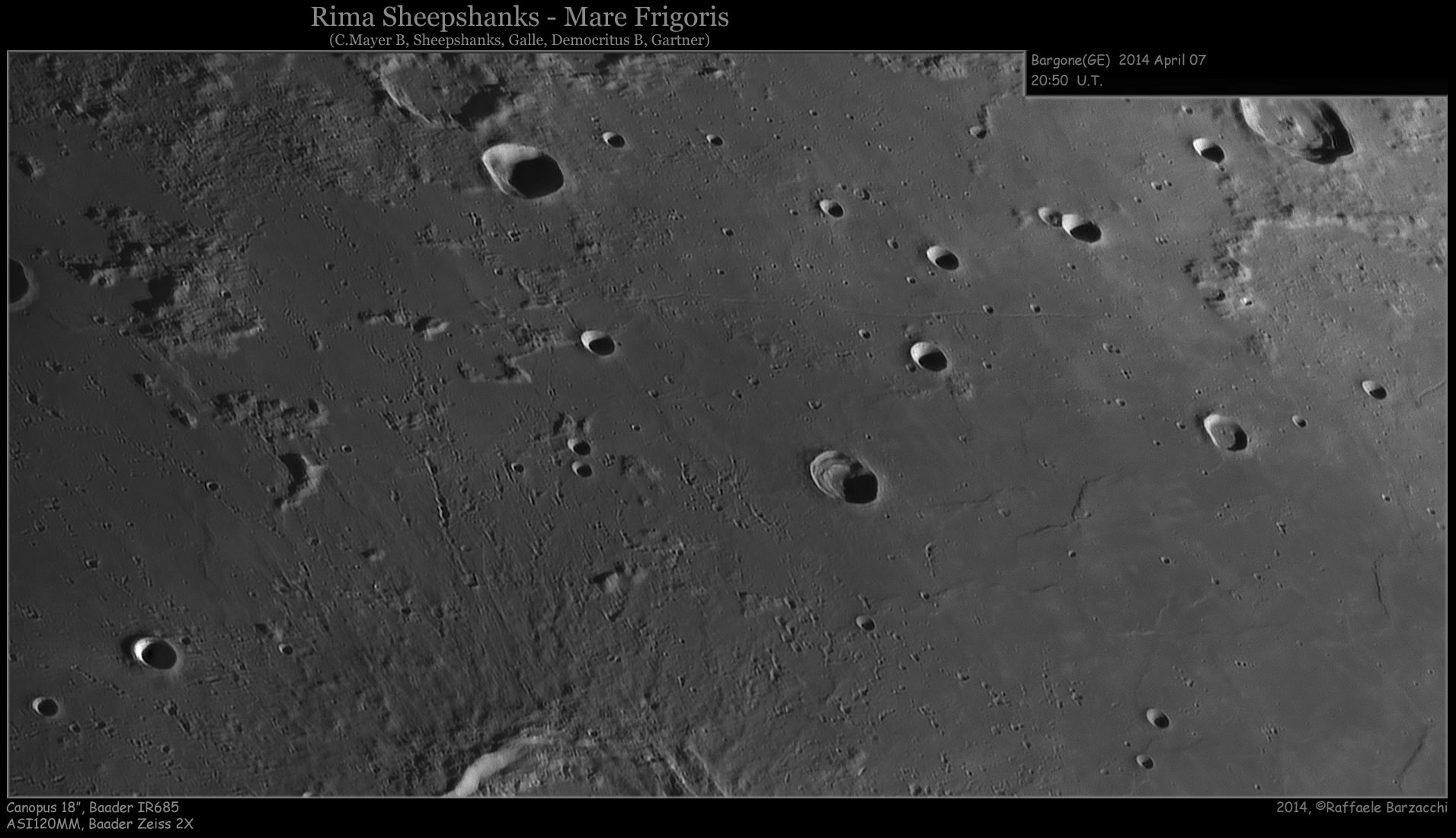September 20, 2024
A Knot of Features
Originally published April 28, 2014

image by Raffaele Barzacchi
Here is a part of the Mare Frigoris that is particularly interesting because of the structures of different natures. First of all, the beautiful Rima Sheepshanks is a very important high resolution target for astroimagers since it is not easy to detect it in its entirety. The rille cuts Mare Frigoris for over 200 kilometers from east to north-east. As you can see in the upper left there is the crater Sheepshanks, which gave the name to the rille, and it is almost completely in shadow because of the phase and the particular lunar libration. Under the rille on the opposite side to the south there is the crater Galle with its beautiful walls visible. Almost at the end of the rille at the top is Democritus B with the small crater well resolved with a really interesting central peak. Finally, to the right, you can see the large crater Gartner with its beautiful rille. In the lower south there is ejecta from the great Aristoteles. The whole area that goes from left to north of Aristoteles is full of micro-craters and chain craters really well resolved as an obvious consequence of the crater formation. It was a surprise for me to finally see the Sheepshanks Rille so clearly in a natural way and without the usual forced processing to pull it out.
Raffaele Barzacchi
Related Links
21st Century Atlas chart 10.
Yesterday's LPOD: Cosmic Reflections
Tomorrow's LPOD: A New Classic
COMMENTS?
Register, Log in, and join in the comments.



